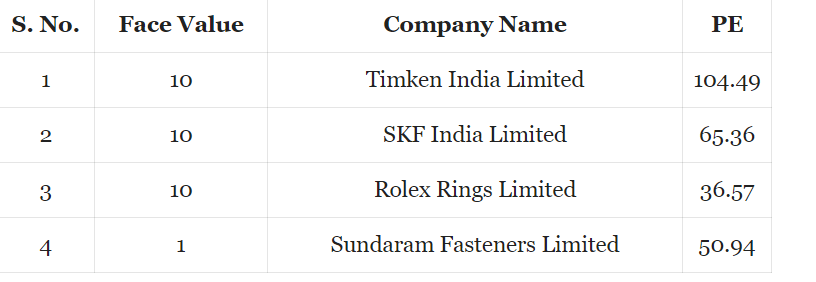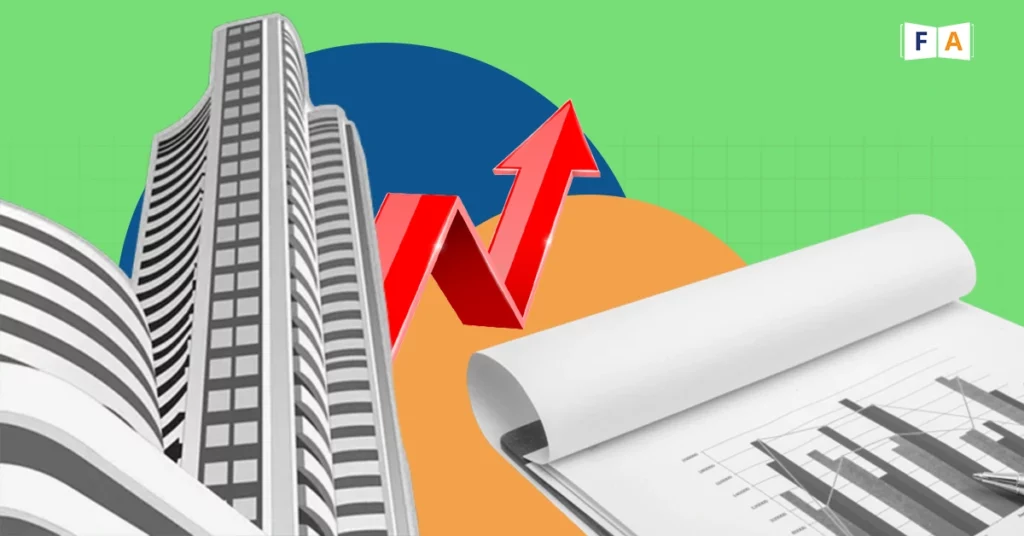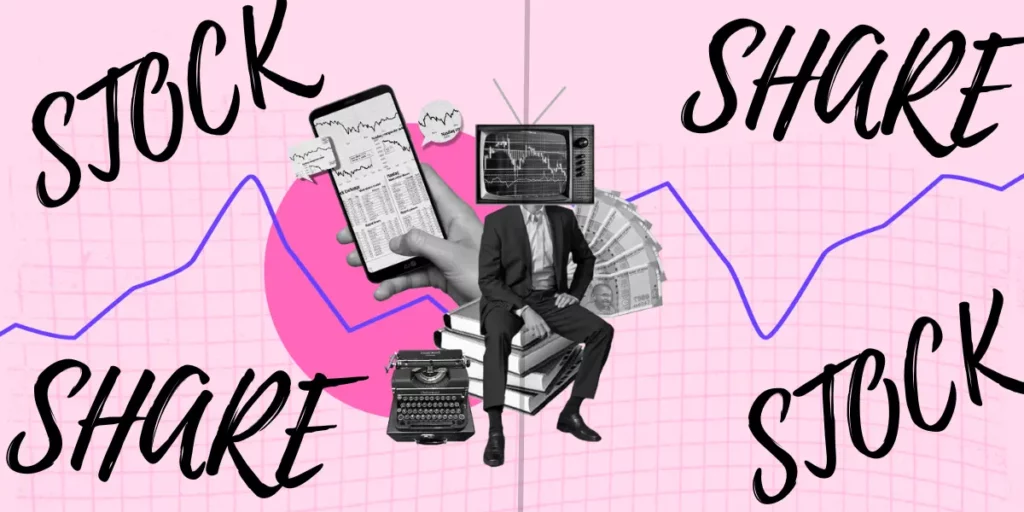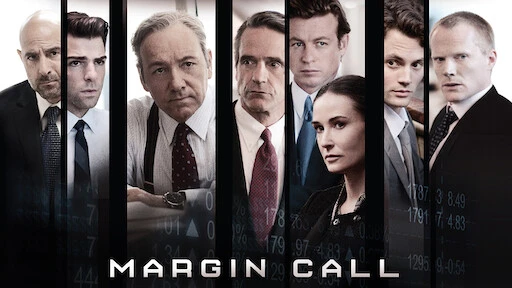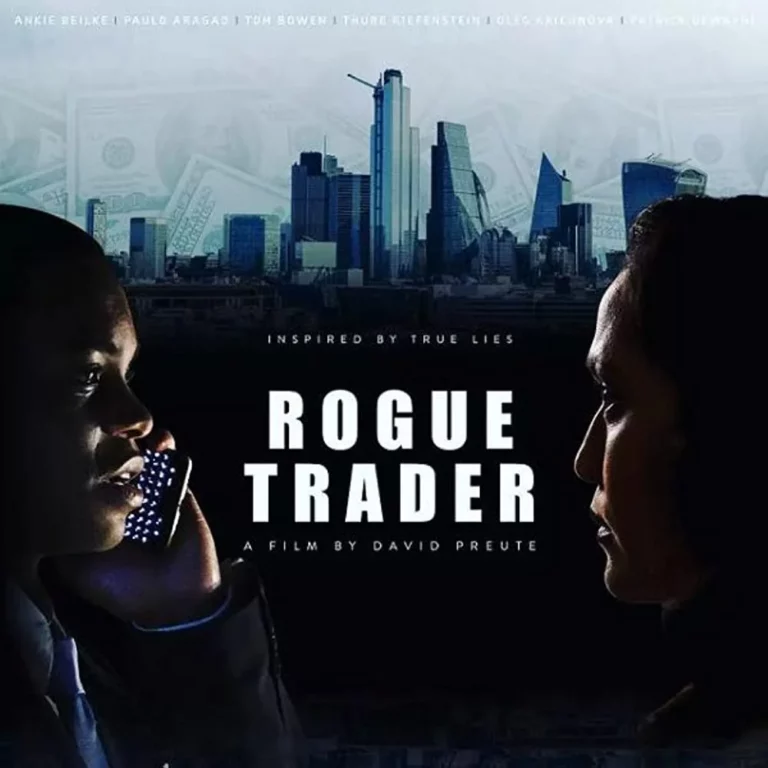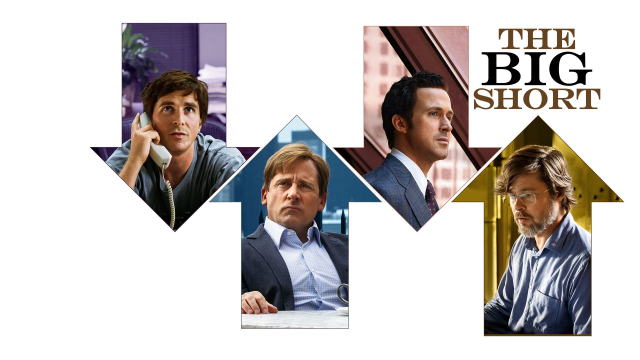Topics Covered
- What Is the Average Stock Market Return?
- S&P 500 Average Return: 5-year, 10-year, 20-year, 30-year
- S&P 500 Average Return: 5-year, 10-year, 20-year, 30-year
- Average Market Return for the Last 5 Years
- Average Market Return for the Last 10 Years
- Average Market Return for the Last 20 Years
- Average Market Return for the Last 30 Years
- What Is a Stock Market Return?
- Factors That Impact the Stock Market
- Measuring Growth in the Stock Market
- What Is a Good Yearly Return on Stocks?
- Why the S&P 500 Average Return Isn’t Always Average
- Dot-Com Bubble
- Financial Crisis of 2008
- Market Recovery
- Future Stock Market Growth Predictions
- CONCLUSION
What Is the Average Stock Market Return?

It’s critical for investors to comprehend typical stock returns and the potential implications for long-term portfolio growth. Based on the S&P 500, the overall average stock market return is about 10% each year; however, when inflation is taken into consideration, the actual return is more in the range of 6% to 7%.
It’s unusual for the stock market’s annual average return to be 10%. Only eight times in the nearly 100 years of data (1926 to 2021) was the average annual stock market return between 8% and 12%. Real stock market returns can be either larger or significantly lower.
This ongoing crisis in the stock market has a bright side. There is a potential that someone who loses thousands of dollars in the stock market will eventually make it up. To avoid losing money when the market has a terrible week, many experts advise hanging onto investments rather than switching to other stocks.
Yes, the investment might be a long-term endeavor. But how much profit can investors anticipate in a typical year or decade?
Before retiring, a lot of people want to know how much they stand to gain or lose. Every stock market investor should consider the stock market return, which is the amount they gain or lose over time.
S&P 500 Average Return: 5-year, 10-year, 20-year, 30-year
Typically, people don’t make stock market investments for only one year. Instead, they make long-term investments in the hopes that the investments they purchase today will be worth more when they decide to sell them in the future. To better comprehend stock price movement, it may be more beneficial to look at the average stock market return over the past 10, 20, and 30 years.
We may begin to obtain a sense of the typical market returns going back 5, 10, 20, and 30 years by looking at the S&P 500. Here are the last three decades’ average stock market returns, as determined by MoneyChimp.
Average Market Return for the Last 5 Years
The average stock market return over the last five years was 17.04% (13.64% when adjusted for inflation), according to S&P annual returns from 2017 to 2021. That exceeds the ordinary stock market average return of 10% by a wide margin. This number may have been even greater if the market hadn’t experienced early-2020 pandemic-related volatility.
Average Market Return for the Last 10 Years
Looking at the S&P 500 from 2012 through 2021, the average yearly return has been higher than the 10-year average return of 10%, at 14.83% (12.37% when adjusted for inflation).
The stock market underwent ups and downs over the course of the decade, but only 2015 and 2018 saw losses, and even those losses weren’t significant at 0.73% and 6.24%, respectively.
Average Market Return for the Last 20 Years
The average stock market return for the past 20 years, measured in terms of the S&P 500 from 2002 to 2021, is 8.91% (6.40% when adjusted for inflation).
During the first decade of 2000, the United States saw some significant lows and notable highs.
The market was performing extraordinarily well at the beginning of 2000, but from late 2000 to 2002, the dot-com bust caused losses for three straight years. The era following 9/11 in 2001 wasn’t helpful.
The financial crisis caused significant losses in 2008. The fact that the 20-year average stock market return is lower than the annual average is not at all surprising when these factors are taken into account.
Average Market Return for the Last 30 Years
The average return gets a little bit closer to the annual average of 10% when we add another decade to the mix. The average stock market return for the past 30 years, measured in terms of the S&P 500 from 1992 to 2021, is 9.89% (7.31% when adjusted for inflation).
The dot-com bubble in the late 1990s (before the crisis), which produced strong return rates for five straight years, can be partly blamed for this performance.
What Is a Stock Market Return?
A stock market return is a return on an investor’s investment in the form of a profit, dividend, or both. Knowing why the stock market varies might be useful in understanding stock market results.
According to a number of variables, including supply and demand, market mood, changes in revenue, and political difficulties, to mention a few, a company’s share price may rise or fall. The average rate of return on equities that a shareholder realizes can be influenced by all of these variables.
In a linked economy, seemingly unrelated financial issues, such as rising trade tariffs between two countries, can affect the valuation of some equities. Since the stock market is erratic, it can occasionally be affected by recent developments abroad and abrupt changes in the costs of commodities that are accessible to businesses and consumers in the US.
Investors may benefit from understanding the changes by using a specific stock as an example, such as an airline stock, and then applying what they learn to the entire stock market.
For instance, academics have claimed that listed firms’ market values decreased by $1.7 trillion as a result of the imposition of retaliatory tariffs on steel and aluminum imports from China to the US. Other analysts assert that over the course of a year, U.S.-China tariffs cost the typical American household $374.
Factors That Impact the Stock Market
The value of stocks and the typical return on investments for investors are influenced by a variety of factors.
Keeping with the airline example, some of the U.S. airline industry’s revenue comes from people choosing to pay for flights they do not necessarily need to take. The market may respond out of fear of future sales declines or worry about the rising cost of doing business when trade battles leave American consumers with less disposable income (i.e., certain taxed imports suddenly costing more). This is referred to as market sentimentality, and it can lower the value of a stock.
China retaliated by imposing tariffs on American goods after the U.S. raised import taxes on metals from China. A one-day loss of $1 trillion in the value of global stocks was caused by China’s 2019 declaration of retaliatory tariffs against the U.S., which would affect products like appliances, agricultural, construction, textiles, and rubber made in the United States.
The stock market as a whole may go up or down when the share values of numerous companies change concurrently. Shares of multiple large corporations may fall, and the public may lose confidence in the U.S. economy if a trade war impacts various companies’ foreign output or consumers’ capacity to spend domestically. Because of this, the market can decline. Some stocks may increase when import and export tariffs are removed because traders expect lower costs to be passed on to customers and enterprises.
Returns on the stock market are impacted by all of this volatility. People often inquire how much they will have gained (or lost) after a year, 10, 20, or 30 years when they wonder what their return will be. Despite the fact that each investor chooses their own companies and funds, looking at the average stock market return is a quick and easy approach to predict how much money they might make.
Measuring Growth in the Stock Market
How are stock market returns calculated? by examining the indexes. There are about 5,000 indexes that represent US stocks; an index is a collection of stocks that represents a segment of the stock market. The Dow Jones Industrial Average, Nasdaq Composite, and S&P 500 are the three most popular market indices, which investors may be familiar with.
The 500 largest publicly traded firms, including Microsoft, Apple, Amazon, Facebook, and Alphabet, are represented by the S&P 500 index. Its performance is seen as a good indicator of how the market is doing generally because it represents about 80% of the US stock market.
The S&P 500 is frequently used when discussing the stock market and the average stock market return.
What Is a Good Yearly Return on Stocks?
It’s crucial to be realistic when discussing the typical rate of return on equities and what you can anticipate. As previously stated, the typical stock market return tends to be around 10%, but when inflation is taken into account, returns are typically closer to 6%.
Using the 6% number as a starting point, an investor may decide to build a portfolio that is intended to provide returns at that rate. You’re more likely to see stock market returns that are in the average or normal range if you have investments in funds that follow the S&P 500. Anything above 6% may be viewed as the cherry on top.
An investor seeking above-average stock market returns may decide to develop their portfolio more aggressively, looking at actively managed funds or momentum trading, for example, in an effort to take advantage of higher return potential. However, those tactics may carry more risk, and as always, there is no assurance that an investor would outperform the market. Additionally, paying greater expense ratios or charges due to active trading may reduce investment gains.
An investor may experience consistent returns over time by employing a buy-and-hold strategy and continuing to invest through market ups and downs. For instance, with dollar-cost averaging, investments would be made regardless of how high or low stock prices rose or fell. They might not outperform the market in this manner, but they would be able to ride the waves of the market as stock market returns rose or fell.
An investor who adopts this mindset will be less likely to panic and sell when market turbulence arises. This is crucial since timing your exit or entry into the market incorrectly could have a major influence on your portfolio’s overall return profile.
Why the S&P 500 Average Return Isn’t Always Average
Because outliers can skew the yearly average, the annual average of 10% is not a good predictor of stock market returns for a given year. Outlier years are years where the return is significantly greater or lower than average.
When compared to the return over the previous 10 years, which was 14.83%, the average stock market return over the past 20 years, for instance, may look modest at 8.91%. But from 2000 to 2009, not every year was awful for the stock market. In actuality, the average return in 2003 was 26.38%, while in 2009, it was 23.45%. However, there were unfavourable outliers that had an impact on the 20-year average.
Dot-Com Bubble
Outliers in the stock market are perfectly illustrated by returns from 2000 to 2009. The dot-com bubble, which erupted in the late 1990s, saw a boom in the number of technology and web-based businesses. Investors began selling their shares in a frenzy in 2000 as a result of massive “sell” orders issued on their stocks by businesses like Cisco and Dell.
The market lost money every year for three years during this time, which is frequently referred to as the “dot-com bust.” Average yearly losses were 10.14 percent in 2000, 13.04 percent in 2001, and 23.3 percent in 2002.
Financial Crisis of 2008
The 2008 financial crisis is a further illustration of an outlier. For many years, banks have provided atypical loans to people with poor credit and low incomes so they can purchase homes. As more people purchased homes, housing costs skyrocketed. People were no longer able to afford their homes, which created difficulties for the lenders.
In September of that year, the Fed presented a bank bailout measure, but Congress rejected it, causing a market crash. Although the legislation was passed by Congress in October, the stock market damage was not immediately repaired. The market return was down a staggering 38.49% in 2008.
Market Recovery
The 2008 financial crisis and the dot-com crash are two prominent examples of outliers that have reduced stock returns more than typical. However, the stock market skyrocketed in the years that followed these unfavorable exceptions.
In late 2003, the dot-com bust-related panic and other tensions began to subside, and the market returned 26.38% for the year. Up until the 2008 financial crisis, annual average returns remained in an upward trend for four more years.
Following the 2008 market meltdown, the market recovered in 2009 with a return of 23.45% and then kept growing for the following six years. The first decline occurred in 2015, however, it only decreased by 0.73%.
Strong increases—even if they aren’t huge—and successive annual gains frequently come after sharp declines. When share prices began to fall in 2008, anyone who panicked and sold their stocks undoubtedly suffered significant financial losses. But by 2012, when market returns had finally improved enough to counterbalance how much the market had lost in 2008, individuals that hung onto their investments presumably saw an improvement in their incomes.
It may be wise to keep the big picture in mind when the stock market faces a negative aberration.
Future Stock Market Growth Predictions
When the stock market performs poorly, as it did during the dot-com crash and financial crisis, we may observe that it eventually recovers. The stock market will eventually slow down and suffer a loss if it performs very well. This can aid in balancing out investors’ average stock return.
According to the commonly established rule, if an investor’s rate of return is low right now, they can anticipate that it will be high in the future; if it is high right now, they can anticipate that it will be low. In the past, the market has maintained equilibrium and expanded favorably overall. Returns on the stock market rise around 70% of the time.
A stock market correction occurs when share prices reach their peak and subsequently decline by 10% or more. Investors can wager that the market will correct itself by dropping if it is doing well.
There is no way to guarantee a given stock market return at all, much less over a specific period of time, as all investments carry risk. It can be challenging to anticipate a stock’s performance with accuracy because many factors influence stock performance. And it is completely false to believe that investors can time the stock market to optimise gains.
CONCLUSION
Although the U.S. stock market returns 10% on average each year, there are certain limitations to that figure.
Realistically, when inflation is taken into consideration, that number is closer to 6% to 7%. Additionally, a 10% stock market return occurs only occasionally; the figure represents an average rather than the norm. Some years are higher than others, and vice versa.
Some investors might find it enjoyable to follow the stock market’s ups and downs. Others could have anxiety when attempting to decide when their stocks are at an all-time high or are going downhill. Each investor has their own unique style. Members can choose between active and automated investing with SoFi Invest® to choose the investing approach that suits them best.
For those who prefer a hands-on approach, active investing is for you. They are free to trade and check their stocks online as they like. A hands-off approach is preferred by those who use automated investing. The SoFi Invest® app allows them to enter their objectives, and SoFi handles the rest.






